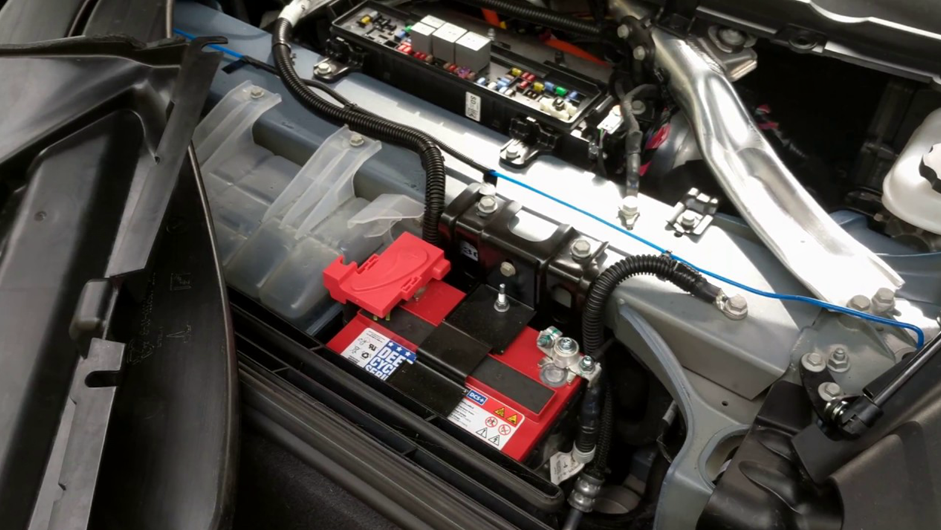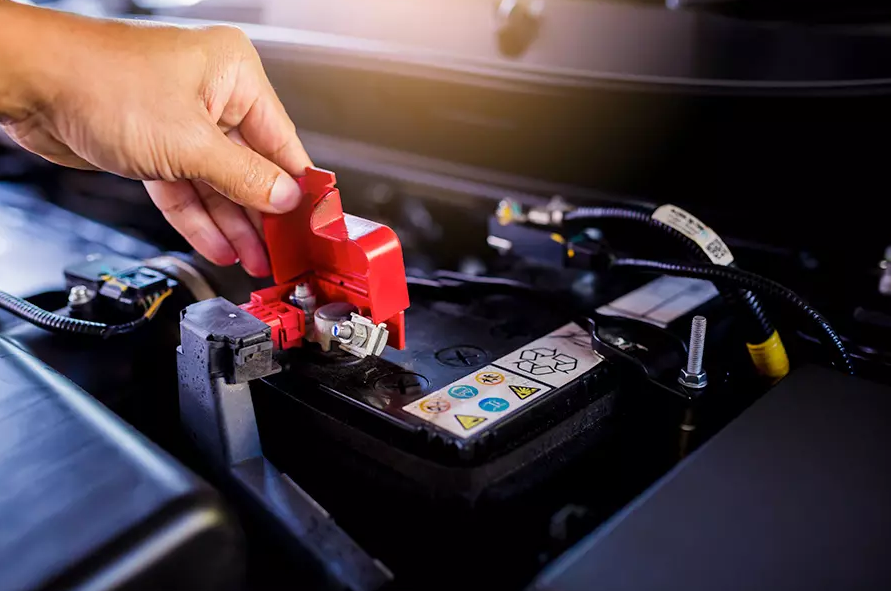Lithium-ion Battery: The Core Technology of Modern Energy Storage
Lithium-ion battery, as one of the core technologies in the field of modern energy storage, has been attracting attention since its birth with its excellent performance and wide application prospects. This article will deeply explore the basic principles, structural composition and unique advantages of lithium-ion batteries in energy storage, and reveal the secrets of this technological product to you.
1. Basic Principles
Li-ion battery is a secondary battery, that is, a rechargeable battery, and its working principle mainly depends on the movement of lithium ions between the positive electrode and the negative electrode. During the charging process, lithium ions are deintercalated from the positive electrode material and embedded into the negative electrode material through the electrolyte, making the negative electrode in a lithium-rich state; while during the discharging process, lithium ions are deintercalated from the negative electrode material and returned to the positive electrode through the electrolyte to complete a complete charging and discharging cycle. This process is commonly referred to as the “rocking chair battery” effect.

2. Structural Composition
The structure of Li-ion battery is relatively complex, but it mainly consists of the following main parts:
Positive electrode: The positive electrode is an important component of lithium-ion batteries, and usually uses lithium-containing oxides as active materials, such as lithium cobalt oxide (LixCoO2). The choice of positive electrode material directly affects the performance of the battery, including energy density, cycle life, etc.
Negative electrode: The negative electrode usually uses carbon materials such as graphite or petroleum coke as active materials. These materials have good lithium insertion properties and can receive lithium ions that migrate from the positive electrode during charging.
Electrolyte: The electrolyte is the channel for lithium ion migration in Li-ion batteries, usually a solution of organic solvents and lithium salts. The performance of the electrolyte directly affects the ionic conductivity and safety of the battery.
Diaphragm: The diaphragm is located between the positive and negative electrodes to prevent short circuits caused by direct contact between the two electrodes. The diaphragm also allows lithium ions to pass through to complete the charge and discharge process.
Battery case: The battery case is used to encapsulate all of the components inside the battery and protect the battery from the external environment. Common battery case materials include steel cases and aluminum cases.

3. Unique Advantages
The reason why lithium-ion batteries can occupy an important position in the field of energy storage is mainly due to the following unique advantages:
High energy density: Lithium-ion batteries have high energy density and can store a large amount of electrical energy in a small volume, which is particularly important for applications such as portable electronic devices and electric vehicles.
Long cycle life: Lithium-ion batteries have a long cycle life and can maintain a high level of performance after multiple charge and discharge cycles, reducing the cost of ownership.
No memory effect: Compared to early nickel-cadmium batteries and nickel-metal hydride batteries, lithium-ion batteries have the characteristics of no memory effect, that is, the battery capacity does not decrease due to partial discharge.
Low self-discharge rate: Lithium-ion batteries have a low self-discharge rate and can maintain a high power level when not used for a long time.
Environmentally friendly: Lithium-ion batteries do not contain harmful substances such as heavy metals and have a low impact on the environment. At the same time, with the advancement of recycling technology, the recycling rate of lithium-ion batteries is also increasing.
In summary, lithium-ion batteries have become one of the core technologies in the field of modern energy storage with excellent performance and wide application prospects. Through continuous technological innovation and process improvement, the performance of lithium-ion batteries will be further enhanced, providing more convenient and efficient energy solutions for people’s daily lives and industrial production.
-
 Introduction: Communication plays a vital role in our daily lives. We rely heavily on our smartphones, tablets, and other devices to stay connected with our loved ones and to access information. Behind the scenes, communication base stations serve as the backbone of our connectivity, enabling seamless network coverage. Traditionally, these base stations have been powered by diesel generators, which...Citeşte mai mult
Introduction: Communication plays a vital role in our daily lives. We rely heavily on our smartphones, tablets, and other devices to stay connected with our loved ones and to access information. Behind the scenes, communication base stations serve as the backbone of our connectivity, enabling seamless network coverage. Traditionally, these base stations have been powered by diesel generators, which...Citeşte mai mult -
 Lithium-ion batteries have become a popular choice for many different applications due to their high energy density and long cycle life. However, not all lithium-ion batteries are created equal. LiFePO4 batteries, in particular, have gained popularity due to their excellent cycling performance, long lifespan, and superior safety compared to other lithium-ion chemistries. Understanding the lifespan of LiFePO4 batteries is...Citeşte mai mult
Lithium-ion batteries have become a popular choice for many different applications due to their high energy density and long cycle life. However, not all lithium-ion batteries are created equal. LiFePO4 batteries, in particular, have gained popularity due to their excellent cycling performance, long lifespan, and superior safety compared to other lithium-ion chemistries. Understanding the lifespan of LiFePO4 batteries is...Citeşte mai mult -
 In today's modern world, industries rely heavily on power supply to carry out their operations effectively and efficiently. Industrial power products batteries have revolutionized the way businesses function, providing a reliable and uninterrupted source of power. These batteries have become an essential component in various sectors, including manufacturing, transportation, telecommunications, and many more. One of the key advantages of...Citeşte mai mult
In today's modern world, industries rely heavily on power supply to carry out their operations effectively and efficiently. Industrial power products batteries have revolutionized the way businesses function, providing a reliable and uninterrupted source of power. These batteries have become an essential component in various sectors, including manufacturing, transportation, telecommunications, and many more. One of the key advantages of...Citeşte mai mult -
 When it comes to owning a car, one of the most important things you need to consider is the battery. This is because it is responsible for starting the engine and powering all the electrical systems in your vehicle. Therefore, it is essential to choose a reliable car starter battery that can meet your needs. In this article, we...Citeşte mai mult
When it comes to owning a car, one of the most important things you need to consider is the battery. This is because it is responsible for starting the engine and powering all the electrical systems in your vehicle. Therefore, it is essential to choose a reliable car starter battery that can meet your needs. In this article, we...Citeşte mai mult -
 A marine starting battery is an essential component of any watercraft. It provides the power needed to start the engine and get the boat moving. Without a reliable starting battery, your boat won't be able to function at all. That's why it's crucial to choose the right battery for your needs. When shopping for a marine starting battery, there...Citeşte mai mult
A marine starting battery is an essential component of any watercraft. It provides the power needed to start the engine and get the boat moving. Without a reliable starting battery, your boat won't be able to function at all. That's why it's crucial to choose the right battery for your needs. When shopping for a marine starting battery, there...Citeşte mai mult -
 Bateriile cu fosfat de fier litiu (LiFePO4) sunt un tip de baterie reîncărcabilă care au câștigat rapid popularitate în diverse aplicații, inclusiv în industria auto. Bateriile LiFePO4 sunt cunoscute pentru densitatea lor mare de energie, durata de viață lungă și caracteristicile excelente de siguranță, făcându-le o soluție fiabilă și eficientă pentru pornirea vehiculelor. În comparație cu bateriile tradiționale cu plumb-acid, care au fost folosite în vehicule...Citeşte mai mult
Bateriile cu fosfat de fier litiu (LiFePO4) sunt un tip de baterie reîncărcabilă care au câștigat rapid popularitate în diverse aplicații, inclusiv în industria auto. Bateriile LiFePO4 sunt cunoscute pentru densitatea lor mare de energie, durata de viață lungă și caracteristicile excelente de siguranță, făcându-le o soluție fiabilă și eficientă pentru pornirea vehiculelor. În comparație cu bateriile tradiționale cu plumb-acid, care au fost folosite în vehicule...Citeşte mai mult -
 Introduction In recent years, the global push for sustainability has prompted industries to adopt more eco-friendly practices. Warehouse operations, which often involve heavy lifting and extensive use of machinery, have also taken steps towards reducing their carbon footprint. One significant development in this regard is the emergence of electric forklifts powered by lithium batteries. This article will explore how...Citeşte mai mult
Introduction In recent years, the global push for sustainability has prompted industries to adopt more eco-friendly practices. Warehouse operations, which often involve heavy lifting and extensive use of machinery, have also taken steps towards reducing their carbon footprint. One significant development in this regard is the emergence of electric forklifts powered by lithium batteries. This article will explore how...Citeşte mai mult

